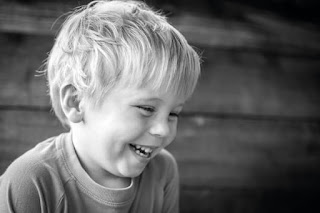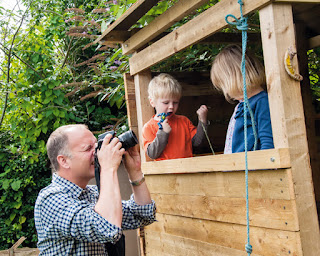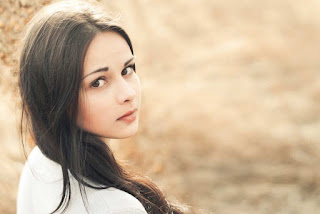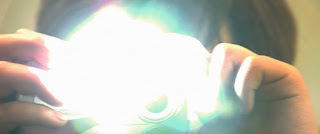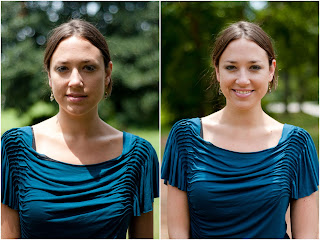Portrait photography or portraiture is photography of a person or group of people that displays the expression, personality, and mood of the subject. Like other types of portraiture,
the focus of the photograph is usually the person's face, although the
entire body and the background or context may be included.<wikipedia>
1. Photograph the subject in their native environment.
Some people just don’t belong in a studio. They feel awkward and it
shows in camera. So instead of forcing Grandpa into the Walmart Photo
Studio, let him go to work in his workshop and photograph him doing what
he loves. Instead of tears and tantrums when you try to dress up your
child all pretty for studio punishment, let him play with the toys and
snap pictures of every moment.
2. Never shoot kids or babies from your normal standing height. This is the view we always have of kids–the tops of their heads. Get down on the ground and take images from their level.
3. Consider giving the subject space to look into.
Place the subject on one side of the image and have them look into
space (not the camera) towards the other side of the frame.
4. Window light. Don’t have an expensive studio or
want to get more natural portraits? Normal lighting in a house or
during the heat of the day is not flattering on skin; however, once
light passes through a window, it is very soft and diffused. Consider
placing your subject next to a window so the light hits the model at an
angle (not looking straight out the window). Without much effort,
you’ve created beautiful light which studios strain to copy.
5. NEVER use the on-camera flash. On-camera flash
gives a deer-in-the-headlights look to even the most beautiful subject.
Because the light is perfectly in line with the lens, the light hits
the subject squarely and creates a flat light that is far from
flattering. If you choose to use a flash, it’s truly necessary to get
an external flash that can be mounted to the side of the photographer.
6. I know you want pictures of the face, but you might also consider going smaller.
What about photographing a child’s sandy feet while he plays on the
beach or your grandmother’s hands, or your friend’s eye. Sometimes the
tiniest details speak volumes.
7. Over expose. I know I just spent two pages
telling you not to do this, but over exposing (making the image too
bright) is a common and beautiful technique for giving a portrait a
clean and simple look.
8. Do something totally off-the-wall. Want cool
pictures of your friend in her prom dress? Throw her in the pool with
the prom dress on. Want cute pics of a baby? Put them in a huge basket
like Anne Geddes or dress them in clothes that are 5 sizes too big.
9. Stop the waving and smiling. When shooting
family pictures, nothing can ruin the moment more than saying, “Hey Dan,
look at the camera!” Your picture will be destroyed. I’m not saying
you have to shoot candid photography all the time, but when you are
going to have the subject know you’re taking the picture, at least pose
the subject properly rather than having them just stand off squarely at
the camera.
10. Shoot up to give power; Shoot down to take power away.
In tip #2, I mentioned that it generally isn’t good to shoot down on
babies and kids. The reason is that kids are already small, so shooting
down on them is so common that the photo does not look as it should.
Similarly, you can make a subject seem more powerful by shooting from a
lower angle up to the subject. For example, it would be ridiculous to
shoot Michael Jordan from above. Since you want to make a sports star
look powerful, it would make much more sense to shoot that subject from a
lower angle.
11. If one person is a bit stale, two people are perfect.
Whenever I’m shooting a subject that gets a bit camera-shy and won’t
give me much of an expression, I always try to let the person interact
with someone different. For example, trying to get kids to have fun and
smile will be tough without a parent being in the studio too. This
technique works the same with adults. If your subject looks a bit
stale, wait until they talk with someone else to capture the best
expressions.
Especially where brides are wearing white dresses, the bride’s teeth need to be perfect.
12. Whiten teeth properly in Photoshop. For quite a
long time, I brushed exposure onto the teeth to make them look whiter.
I never got the results I wanted until another photography told me that
it was better to brush brightness onto the teeth rather than exposure.
Overnight, my digital teeth whitening improved drastically. Try it!
13. Contrast clothing and location. I recently
shot engagement photos for a couple who chose to wear bright colors.
The bride wore bright pink and the groom wore a light blue shirt.
Those colors undoubtedly catch the viewer’s attention, so I chose to
place them in front of muted backgrounds. For this shot, I chose old
grey brick walls, blurred out dark backgrounds, etc. The results were
perfect! You can also apply this tip when shooting a model who is
wearing muted colors. In this situation, shoot the model against a
brightly colored background to make the model stand out.
14. You’re missing out on half of your model. No, I
don’t mean that you could be shooting twice as many people. I mean
that there is a whole other side of your clients that you aren’t
shooting at all. What’s that side? The back side. Shots of the
subject walking away from the camera, or of the subject’s body turned
away from the camera and head facing the camera can be quite compelling.
15. Think application before taking the portrait.
What is your photo going to be used for? While many of our photos are
just used generally for looking at, some photos would be better either
vertical or horizontal if it is going to be used for a specific purpose.
For example, if you’re taking a portrait for someone’s Facebook
profile, you can get a much larger picture by shooting it in vertical
orientation (up-and-down). If you’re shooting for a wedding
announcement, it’s probably better to shoot horizontal so there is
enough room for text on the side of the couple.
Backlighting is great for hard mid-day light.
16. When shooting in poor mid-day lighting, have the subject face away from the sun.
I see this done wrong more often than not. Most of the time,
photographers have the subject face the sun so their face doesn’t look
dim and shadowy in mid-day lighting. This is unfortunate, because the
hard light will create unflattering shadows on the face. The best way
to shoot mid-day portraits is to have the subject face away from the sun
so their face is in the shade, and then have the photographer
over-expose the picture so the face looks properly exposed.
17. Spot metering is your friend. If you don’t
feel comfortable setting the exposure manually to do the technique
taught in tip #16, then learn to use spot metering. With spot metering,
you can simply have the camera meter on the subject’s face to expose it
properly, and then let the background be slightly overexposed. For
some people, spot metering may be a better option than manually setting
the exposure for the face.
18. Whip out the CTO. When shooting in lower light
(or if you have a really powerful strobe), you can put an orange gel on
your flash so that the light that hits the subject is, well… orange.
Then, you adjust your white balance (I always just do it later in
Lightroom) so the subject looks neutral, which makes the background turn
blue. Here is a great collection of examples
of using this color shifting technique. (Side note: I couldn’t
remember the term color shifting this morning, and several helpful
readers reminded me on the ImprovePhotography Facebook fan page).
If you’ve never heard of gelling a flash, you will be surprised to
know that a gel is not “jelly-like” in consistency. It’s just a plastic
colored transparency. You can buy a set of gels for around $10 on Amazon that fit most flashes.
here is the other tips
19. Compose and then focus rather than focusing and re-composing.
Could I have made this tip any more confusing? Probably not. What I
mean is that it is generally preferable to compose the shot and then
move your focus point on to the eye of the subject rather than focusing
on the eye and then recomposing. For more on this, check out this previous post on focus.
20. Models relax immediately when a prop is introduced.
Being a model is scary stuff. It’s just you vs. the guy with the
giant lens. When I see a subject feeling uncomfortable, I immediately
search for a prop. Pick a flower and give it to the bride to play with,
give the couple bubblegum and take a photo of them blowing bubbles
together, give a kid a toy, etc. You don’t necessarily have to include
the prop in the frame (although it usually looks cool), but it is a
guaranteed way to get the subject to relax a bit.
21. Book a “real” photo shoot. Contrary to popular
belief, models are a dime a dozen no matter where you live. Head on
over to ModelMayhem.com and find a local model. Many of them will not
even charge you if you give them copies of the pictures you take. It’s
called TFP–time for prints. Oh, a warning on ModelMayhem… 90% of the
models think their best pictures are when they are “disrobed.” I always
have my wife go on the site and choose a model for me so I don’t have
to see the nastiness. Not cool.
22. Buy a few scarves. My wife, Emily, made me
include this tip for the ladies. She said it’s a great tip for dressing
women for a portrait photography shoot, but I think it’s because she
has an obsession with Confessions of a Shopaholic (the girl the green
scarf). Anyway, it has worked wonders for me in the past. For $15 you
can buy probably 10 scarves at any many stores. Then, you can have your
female subjects wear plain colors (such as a white T-shirt and jeans)
and then wear different colors of scarves. I found that this works
GREAT for senior portraits, because teenage girls like “accessorizing”
and changing clothes every five minutes. Big time saver and you’ll get
many more looks out of one subject.











